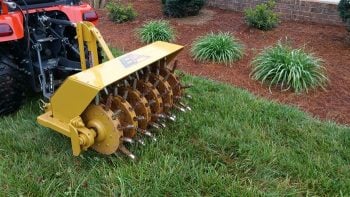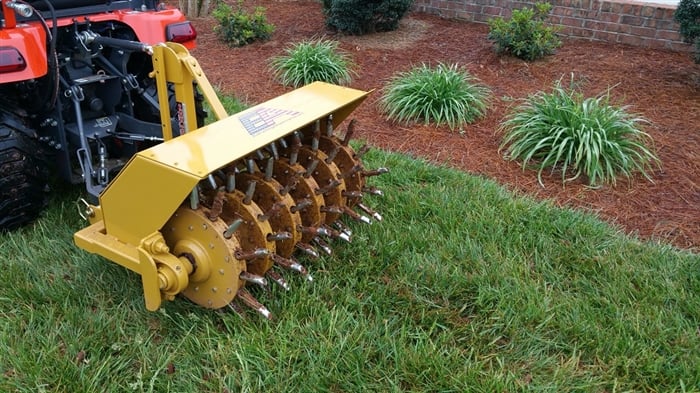 Fall is a great time to prepare your lawn for the spring. The grass will be preparing to go dormant, which means the cooler weather will help the grass roots grow stronger and deeper. This fortifies the grass for the hot days ahead by fortifying its ability to reach more deeply for adequate moisture.
Fall is a great time to prepare your lawn for the spring. The grass will be preparing to go dormant, which means the cooler weather will help the grass roots grow stronger and deeper. This fortifies the grass for the hot days ahead by fortifying its ability to reach more deeply for adequate moisture.
Here are some great tips to help prepare the grass during fall:
Mowing the Grass and Caring For Your Equipment.
You need to mow your grass until the frost arrives. It’s a good idea to mow the grass at its regular height until it stops growing.
Once the grass begins to go dormant, it’s time to winterize your mowing equipment. That includes sharpening and oiling the blades, inspecting for damages, and generally getting them cleaned up for next season.
Pest control
During the winter, bugs and pests can make a home in the grass. This can cause a serious issue with the health of the grass bed, so you want to keep any eye out for intruders.
Grubs worms are a major offender when it comes to damage, if they become overpopulated in the topsoil. These, among other pests, are easily eradicated using pesticides and even weed killers.
However, unless you notice a problem, there is no reason to apply unnecessary chemicals to your lawn. Read more about identifying lawn pests, including grubs and many others.
Aeration
During the hot summer days, the top layer of soil can harden, making it a struggle to absorb water and nutrients. This can cause the grass to go brown, as well as cause root damage.
During the fall, it’s a great opportunity to aerate the soil so the roots get larger levels of moisture and nutrients. This helps prepare the grass for the spring by allowing the roots grow deeper and stronger in the soil.
Learn more about Lawn Aeration Services offered by Plano Sod Installation.
Watering
Once fall has arrived, it will be cooler, but the amount of rain may not be sufficient for the grass. It is recommended to get a rain gauge to measure how much water your lawn is receiving. If the grass isn’t getting an inch of moisture a week, then you need to continue a watering schedule with your sprinkler system.
Fertilizer
In order the get a healthier, greener looking lawn, it’s a good idea to fertilize during the fall. This should be done after you aerate the ground, so the nutrients have the best chance of soaking into the topsoil.
Fortifying the root system sets your grass up to overwinter with minimal stress, so it can return health and robust next spring. Fertilizing in the fall also reduces your risk of sun-induced chemical burns on your lawn.
Raking and Mulching
You want to keep your grass clear of leaves and debris that can block sunlight and harbor unwanted pests and fungus. Raking, using a leaf blower, or simply mowing the debris into finer particle are all effective methods.
If you have large lawn bags and/or a bagless mower, you can rake and mow the clippings to redistribute to other parts of your lawn. Organic material is a great way to feed your soil, so long as it’s adequately shredded.
Schedule
It’s a good idea to use all of the above information together, treating the grass weekly. Sticking to the schedule to gives your grass the consistency and care needed to give it the best chance of looking green and healthy next spring.




